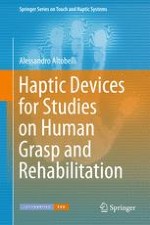
2016 | OriginalPaper | Buchkapitel
1. Introduction
verfasst von : Alessandro Altobelli
Erschienen in: Haptic Devices for Studies on Human Grasp and Rehabilitation
Aktivieren Sie unsere intelligente Suche, um passende Fachinhalte oder Patente zu finden.
Wählen Sie Textabschnitte aus um mit Künstlicher Intelligenz passenden Patente zu finden. powered by
Markieren Sie Textabschnitte, um KI-gestützt weitere passende Inhalte zu finden. powered by